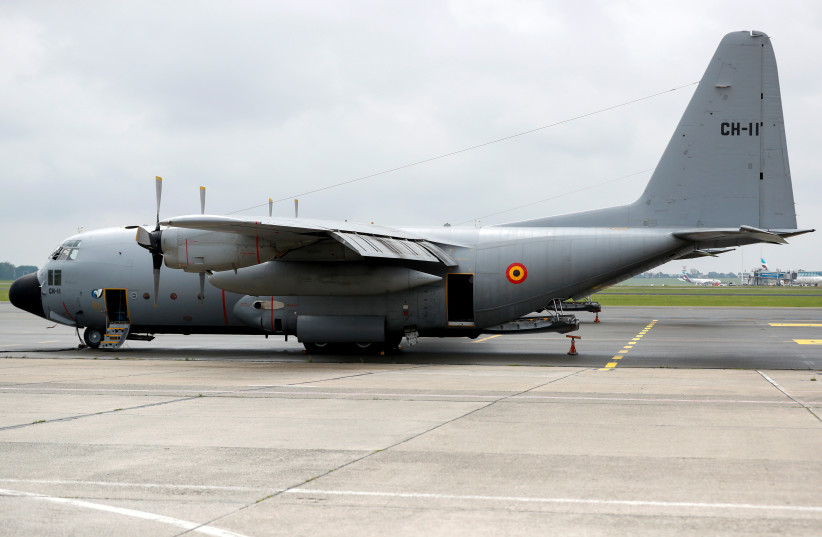Although Israeli forces have never been on the ground in the war-torn Central Asian country, several coalition countries have used Israeli systems during their 20 years of fighting against the radical jihadist group.
According to several reports, while many Israeli defense companies have remained silent on the use of their products in Afghanistan, including Jerusalem PostCountries such as the United Kingdom, Germany, Canada and Australia have used their products for years.
cnxps.cmd.push(function () { cnxps({ playerId: ’36af7c51-0caf-4741-9824-2c941fc6c17b’ }).render(‘4c4d856e0e6f4e3d808bbc1715e132f6’); });
if(window.location.pathname.indexOf(“656089”) != -1){document.getElementsByClassName(“divConnatix”)[0].style.display =”none”;}else if(window.location.pathname.indexOf(“/israel-news/”) != -1){ document.getElementsByClassName(“divConnatix”)[0].style.display = “none”; var script = document.createElement(‘script’); script.src=”https://player.anyclip.com/anyclip-widget/lre-widget/prod/v1/src/lre.js”; script.setAttribute(‘pubname’, ‘jpostcom’); script.setAttribute(‘widgetName’, ‘0011r00001lcD1i_12258’); document.getElementsByClassName(‘divAnyClip’)[0].appendChild(script);}
Many countries used remotely operated aircraft (RPAs) for intelligence gathering, and Israeli-made Spike missiles were used in the war. Soldiers in Israeli-made MRAP (Mine-Resistant Ambush Protected) military light tactical vehicles were able to drive safely in high-intensity areas.
Drones were one of the main Israeli weapon systems used by foreign forces in Afghanistan.
Foreign reports state that Israel is considered a major exporter of drones and has sold such systems to several countries around the world, including Australia, Canada, Chile, Colombia, France, Germany, India, Mexico, Singapore and South Korea. .
The German Air Force began operating the Heron TP manufactured by Israel Aerospace Industries (IAI) in Afghanistan in 2010. They were involved in thousands of missions, logging thousands of flight hours.
The Heron TP is IAI’s most advanced RPA with 40 hours of endurance, a maximum weight of 11,685 pounds and a payload of 2,204 pounds. They can be used for reconnaissance, combat and support roles and can carry air-to-surface missiles to take out hostile targets.
German pilots were trained in Israel to learn how to operate the RPA and its surveillance capabilities.
The Canadian Army and Australians also flew IAI’s Heron 1 RPA in Afghanistan.
Equipped with a satellite data link and electro-optical infrared sensors, Heron 1 is not only capable of providing reconnaissance to ground forces in combat situations, assisting in convoys and patrols, creating movement profiles, and long-term surveillance, but is also capable of conducting long-term surveillance from the air. Also capable of tracking explosives.
Many of them crashed in Afghanistan.
But it was not only the heron that was flying in the skies of Afghanistan.
In Afghanistan since 2005, the Australian military has also flown the Skylark 1 unmanned aerial vehicle (UAV) manufactured by Elbit Systems.
 A Belgian military plane is seen before departing for the evacuation of Belgians in Afghanistan(Credit: Johanna Geron/Reuters)
A Belgian military plane is seen before departing for the evacuation of Belgians in Afghanistan(Credit: Johanna Geron/Reuters)The Skylark is seven and a half feet tall and is used by soldiers for tactical surveillance and near-range counter-terrorism operations. It can be launched by one or two soldiers and operated on the roof of buildings or behind armored personnel carriers, providing live video to operators once airborne.
With a range of 10-15 km, the mini-UAV features an exceptionally quiet electric motor and excellent observation capabilities that give troops intelligence beyond sight, enhancing their performance in various mission scenarios.
Australia also flew the Skylark during the mission in Iraq.
In addition to the RPA, Rafale Advanced Defense Systems’ Spike NLOS (Non Line of Sight) missile was used by both the British and Canadians in Afghanistan.
The accuracy of the missile proved useful in the fight against the Taliban. Although the Brits tried to keep its use quiet, they publicly admitted to using the missile, known as the Exactor, in 2014.
The Spike NLOS is capable of penetrating 39-inch armor and can only be operated in direct attack or mid-course navigation, depending on target coordinates. These modes enable long-range hidden targets to receive precise accuracy, damage assessment and real-time intelligence.
Its range is 25 km. and can be used with multiple weapons such as heat, fragmentation, PBF (penetration, detonation and fragmentation) and PBF/F, suitable for urban and high-intensity conflicts. The missile, which can be installed on various platforms, gives gunners the ability to strike targets at stand-off range and receive real-time intelligence and damage assessments after attacks.
And according to some reports, it was not just the Israeli weapons system in Afghanistan.
Although Israel does not comment on foreign reports, Iranian media reported in 2019 that troops were sent to Afghanistan to gather intelligence on Iranian military movement.
Russia’s Sputnik News said at the time that Israel was operating “under the flags of the United States and the United Arab Emirates”.
Sputnik quoted an Israeli expert as saying that the Israeli military was operating under the framework of US forces stationed there and that the activity was carried out with the knowledge and approval of the Afghan government.
As Western forces leave Afghanistan and the Taliban consolidate their power over the country, the jihadist group has also obtained advanced US weapons, including some drones.
But with Canadians, British and Germans ending their fighting many years ago, it is unlikely that the Taliban got their hands on the Israeli-built systems that hunted them for so long.